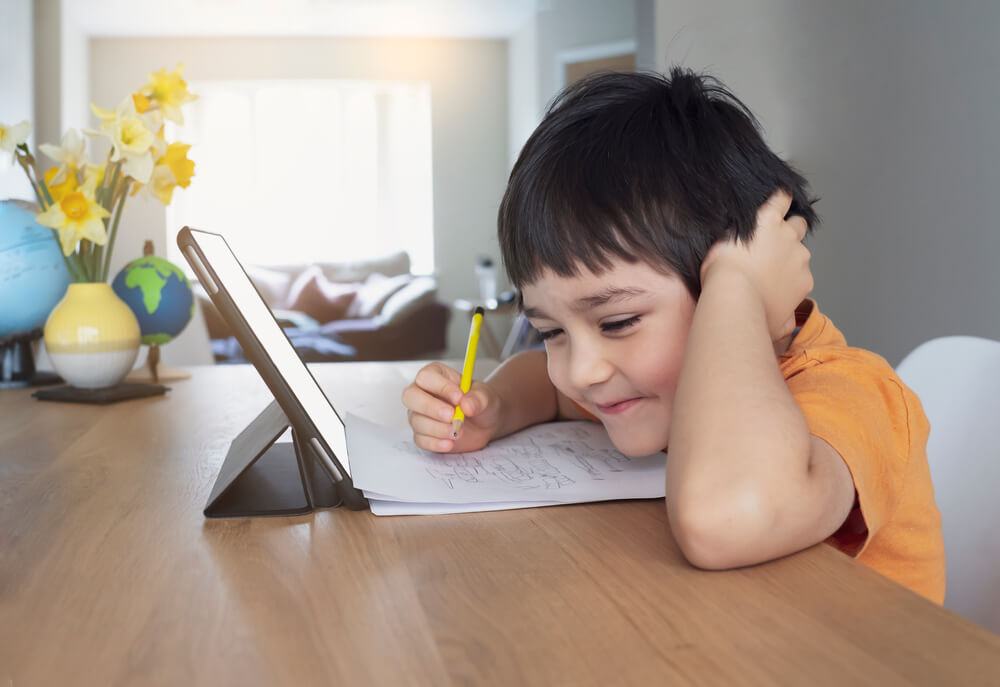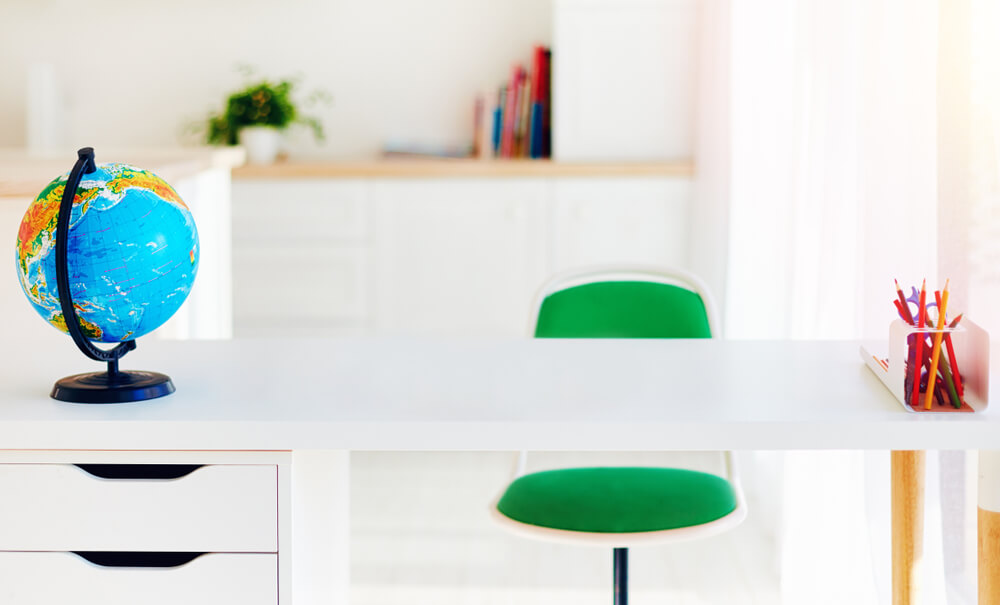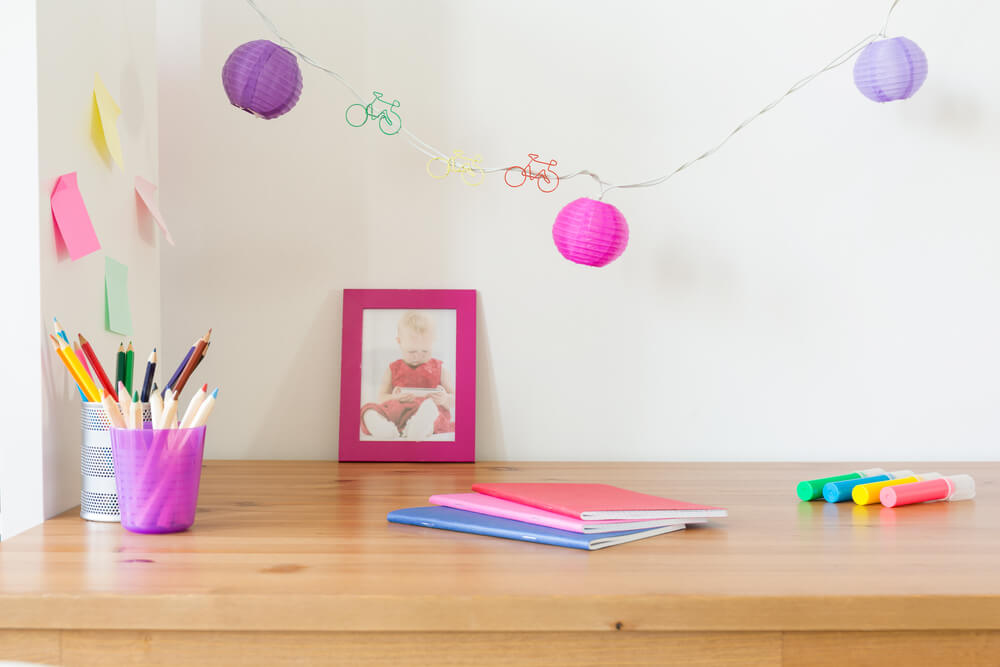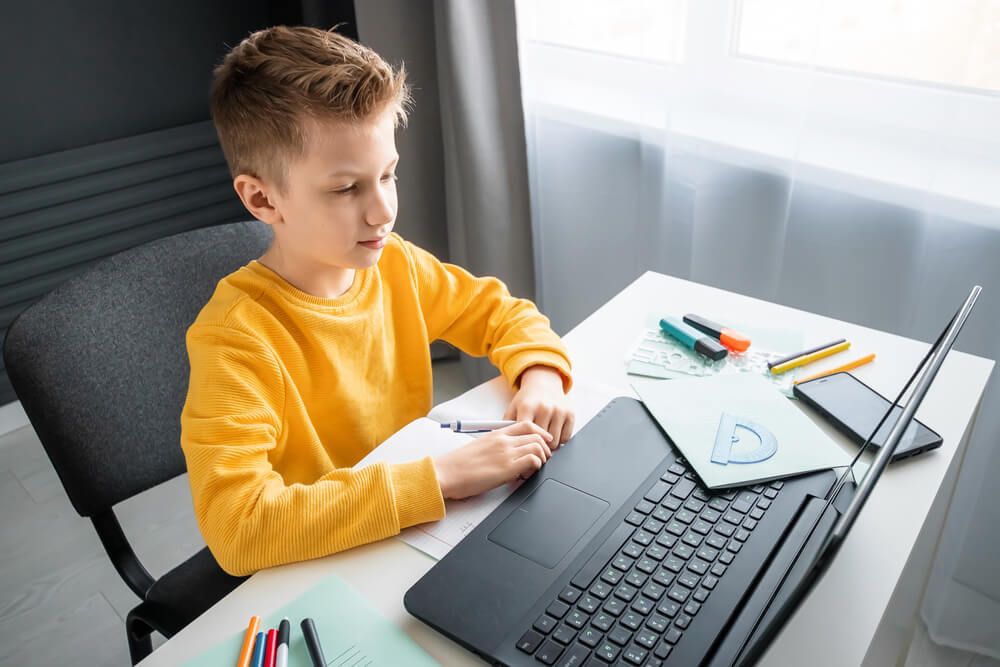
9 Tips in Creating a Learning Environment From Home
Until there is no cure to the COVID-19 pandemic, we can only expect school closures to continue. This has got many students to consider distance learning and make their home their classroom. As a parent, how can you provide an enriched learning environment for your students?

Does an engaging learning environment really matter? Yes. Many students decide to play sick every morning just to evade school. Parents blame the school’s inadequate education, and teachers criticize the parents for the students’ poor performance.
However, the reason could be neither of the two. Many factors take into account why some students lose enthusiasm for going to school, including a poor learning environment.
Believe it or not, an enriched learning environment can help students excel in many areas. When they are in a colorful and educational space, students tend to sharpen their focus, boost their creativity, and increase their motivation to learn.
In this blog post, we will share tips on setting up a comfortable learning environment for your kids to keep them stirred in learning at home.
Table of Contents
Before Creating a Learning Environment
Setting up a learning environment for your students isn’t as easy as it sounds. You must consider these two factors: their age and interests.
Age does matter, and here’s why. What works for a kindergarten will not be the best method for a fifth-grade student. That being said, the learning environment must be based on your child’s age that best fits their educational needs.
For toddlers, an effective learning space is rich in books (storybooks, audiobooks, etc.) and educational toys (for structured and unstructured play; wooden puzzles, kitchen sets, etc.).
Older children may not need as many toys. Perhaps, you can keep the learning place a bit minimalistic—a desk, chair, and good lighting is enough.
Your child’s interests matter, too. These are what will motivate them to study. It helps if you observe your child and learn what motivates them, what sparks their interest, and what topics they love learning about.
Another thing to keep in mind is that kids learn in different ways. Some learn by seeing, while others learn by touching, hearing, or reading. Some are better at learning by using one sense or another.
Parents like you should keep this in mind and determine how your child learns the best.
9 Tips in Creating a Learning Environment
Choose a learning area
Dedicating a specific space in your home as a learning space is the first step. Doing this serves a plateful of benefits. When you designate a specific area for your child’s education, it will show them that you value their learning enough to give it its own space.
The learning space doesn’t necessarily have to be expensive and expansive. Some families have the luxury to dedicate a room as a learning space. Otherwise, you can use a simple desk (or the end of the dining room table).
This area for learning must be free from any distractions. It must have excellent lighting, comfortable temperature, and low noise. Ensure that there is a place to sit and lay out work.
We do not recommend using your child’s bedroom as their learning space. The reason for this is that bringing schoolwork into a personal space brings too many distractions. Aside from that, personal space is supposed to be a safe zone. Bringing homework into it can make it into a stressful environment.
If your kids are in primary age, it is best to set them up a learning space where you can oversee them.
Natural light and fresh air play major roles in keeping students motivated. Hence, consider creating a learning environment near a window.
Comfortable seats

You don’t want your students to keep fidgeting as it can distract them from their lessons. So, think about your child’s chair. Preferably, pick a chair that they can sit comfortably with their feet flat on the floor.
Adding cushions to chairs can also be helpful to make them comfortable. Take note, however, that we do not recommend using the family couch. Although it can work, it may not be the best option for your students. More of this was discussed in our blog post, How to Be More Supportive of Your Kids With Online Learning.
No to distractions

An impactful learning environment is meant to help kids center their attention on the lessons at hand. However, distractions in the learning area are counterproductive.
Mobile phones, tablets, TV, and even pets can be distracting. You should put away their mobile phone or tablet (unless they are using it for work).
Here’s one thing to keep in mind, though. Children are used to working in a busy classroom. Considering that, you don’t want to keep in a place of complete silence.
Some students can focus more on their homework with a bit of gentle music or background noise.
[Related: Ultimate Guide to Homeschooling High School Students]
Reduce clutter

As you may have noticed, removing distractions is crucial in creating a learning environment. Clutters are distractions, too.
Books, toys, and supplies are good, but too many of them can crowd a space, which creates a feeling of disorder.
You can create a clean and orderly learning environment by removing the clutters from the learning area.
Keep all their supplies to hand

Children can use finding their crayons or sharpening their pencils as an excuse to wander off (and later lose focus). So, make sure all the supplies they need are accessible in their learning environment.
Here’s what you can do: sit down and list everything your child would need during the school day.
Your kids must also feel comfortable choosing their next activity without asking for help in reaching high shelves or opening boxes. You don’t have to load the shelves with tons of books and toys. Interestingly, children learn better when they have a few selections of learning materials.
If your kid uses a laptop or tablet, make sure they have the chargers as their station. Make a note of all the login details they need to access any websites they might need.
[Must read: Internet Safety For Students: Teach Your Children About Internet Security]
Make a personalized and functional space
We’ve already talked about a learning environment with accessible supplies and free from distractions. Another key element in making an impactful learning environment is making it functional.
Our suggestion is to create different learning stations where various topics or subjects will be covered. For example, you can set up a reading corner—a spot dedicated to reading books. Children love a place where they can sit alone and read.
Another example is creating a creative corner where they can make their artworks, doodles, and other art projects.
You want the learning environment to be functional, motivating, and more so inspiring. Use decor that doubles as learning tools—maps, globe, animals, shapes, colors, etc.
Set daily routines and dress for success
Help your child get into a regular habit of getting schoolwork done by establishing daily routines. Set aside 20 to 30 minutes to do homework or read every day.
Homeschool delivers a set of unique challenges (i.e., no school bus, inability to see classmates in person, etc.). Not to mention, they are in a different classroom—their home.
That shouldn’t be a reason for your kids to feel as if homeschool is something they can skip whenever they want to. Breakfast time must still be the same as they were attending their brick-and-mortar school.
Serve healthy and hearty snacks

Maintain a positive learning environment by serving your children healthy and hearty meals. Foods rich in Omega-3 fatty acids, antioxidants, and whole grains can enhance brainpower.
Room for failure
A healthy learning environment isn’t just about the physical space. More important than space itself is to let your children understand that failure is okay.
Teach them that they don’t have to be hard on themselves, and they always have room for improvement.
Conclusion
There you have it. Create a healthy and impactful learning environment for your kid by following the tips above. Take note, however, that some families choose a different home learning environment. Use the tips in this blog post that best apply to your situation.
Related Questions
What are the types of learning environments?
There are four types of learning environments: learner-centered, knowledge-centered, assessment-centered, and community-centered. Each type has unique elements. Learn more here.
How do you create a fun learning environment?
You can make a positive learning environment by keeping the room clean, creating a comfortable space, and leaving time for breaks. By doing this, your students will enjoy learning at home.
If you have more tips on creating a pleasant learning environment, we encourage you to share your insights with us. By joining our growing community, you get access to our community of teachers and parents from all over the world.
Our community forum is open for every member of our community. You can post questions, look for answers, and share your knowledge and experiences.
Click the button below to get started:
You can also register using your Facebook or Google account. Click any of the buttons below:
For suggestions, comment below or post a thread on our community forum.






